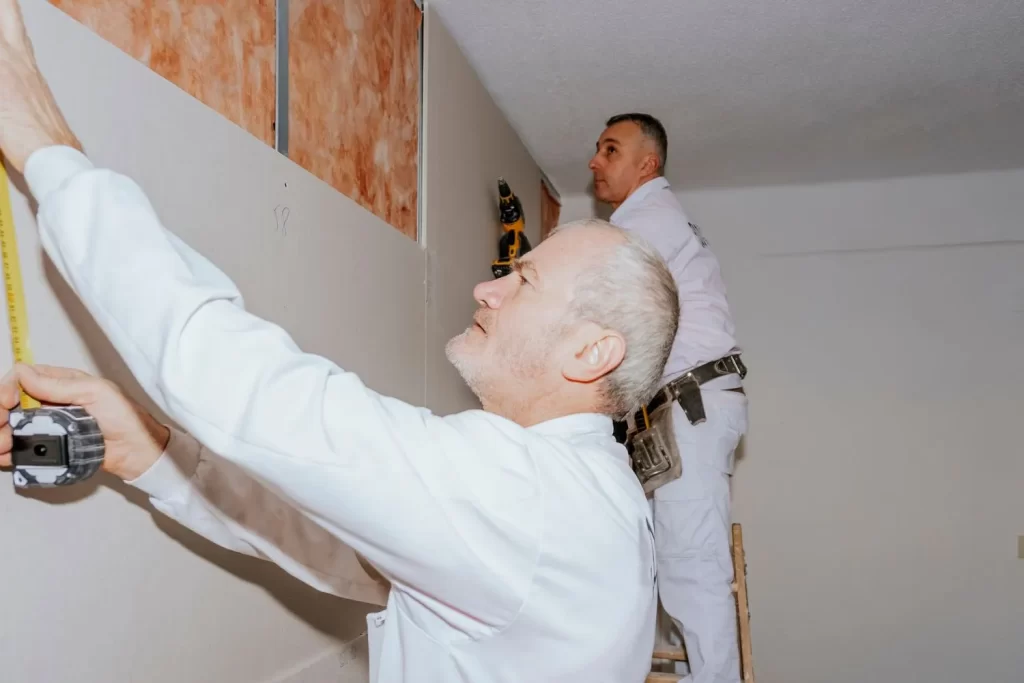
Who Should Invest in Sound Insulation: Protecting Privacy in Shared Spaces
In a world where we’re simultaneously more connected and more focused on our personal needs than ever, the sanctity of our spaces has never been more important. Whether it’s the tranquillity of your home, the productivity of your office, or the melodic haven of a music studio, the right to privacy and peace is one we all cherish.
Sound insulation provides a literal and metaphorical barrier, creating a space where you control the volume. It isn’t just about keeping the noise in or out, but about creating an environment that fosters comfort, focus, and productivity. Picture this: quiet evenings at home, where you’re fully present, not thinking about the ruckus next door.
Imagine a work meeting where the sounds of the street don’t muddle your team’s discussions. Or a music session where the acoustics are as pure as your passion for sound.
Who Benefits
-
Homeowners
Every homeowner dreams of peace and quiet. Sound insulation helps maintain the calm of your living space, protects your peace from neighbours, and keeps family life undisturbed, especially when multiple generations share a home or apartments are tightly packed.
-
Office Managers
The modern workplace is dynamic, open, and often very loud. Sound insulation aids in creating acoustic comfort, which is directly linked to employee satisfaction and performance. From reducing the cacophony of cubicles to enhancing the acoustics of meeting rooms, it’s an investment in productivity.
-
Musicians
For musicians, sound isn’t just about what’s heard. It’s about what’s felt. Sound insulation allows musicians to practice and record without external interference, capturing the purity of their music. Imagine a day of composing where creativity flows without interruption.
Types of Sound Insulation
There’s more than one way to pack a punch with sound insulation. You’ll find a variety of strategies, some more effective in certain situations than others.
-
Resilient Channels
These are thin metal strips designed to reduce sound transmission through walls and floors. They ‘float’ the drywall, creating a little more distance for sound to travel.
-
Acoustic Panels
Usually made of foam or fabric-wrapped fibreglass, these are highly effective in reducing noise reflections in a room. They come in various styles and designs to match your interior decor.
-
Soundproof Curtains
A simple yet effective solution for window dressings. These heavy, sound-absorbing curtains can reduce noise from entering or leaving a room.
DIY vs Professional Installation
The DIY route can save you money, but is it worth the effort? Professionals provide precision and expertise, ensuring the job is done right, but at a cost. Decide what’s more valuable: your time or the quality of the installation.
-
DIY
For the handy, there are plenty of tutorials available to guide your DIY soundproofing project. If you’re technically inclined and willing to invest time and patience, this could be a satisfying endeavour.
-
Professional Installation
From assessment to execution, professional soundproofing companies offer comprehensive services for a range of spaces. They’ll often guarantee their work and can be more efficient, particularly for larger projects.
Cost Breakdown
Before your dream of a soundproofed space turns into a nightmare, consider the costs. Materials, labour, and the size of the space all play a role.
-
Materials
The cost of materials like acoustic panels, soundproof drywall, and insulation will vary based on quality and quantity. For a small project, you might spend a few hundred dollars. For larger spaces, the cost could easily exceed $1,000.
-
Labour
If you opt for professional installation, labour costs will be significant, especially if the work is intricate or requires significant prep.
-
Realistic Budgeting
A rough estimate can help you plan. For a standard-sized room, a complete soundproofing project can range from approximately $500 to $5,000 and beyond, depending on the solutions implemented.
Practical Tips
Before picking up the phone to order materials or call in a professional, consider these practical pearls of wisdom. They’ll help you set realistic expectations and avoid common pitfalls.
-
Start with a Sound Assessment
Understand your current sound challenges and which types of noise you’re dealing with before deciding on a course of action.
-
Layer Your Solutions
Different types of insulation can work better together. Use this to your advantage and layer your protection against sound.
-
Maximise Every Surface
From floor to ceiling, consider every square inch of your space when planning your sound insulation. A holistic approach is often more effective than spot treatments.
Conclusion
Investing in sound insulation is really about investing in the quality of your daily experiences. The cost is tangible, but the benefits extend to intangible qualities like peace, focus, and the full enjoyment of music and sound.
Can you put a price on your well-being? It’s time to consider where sound insulation could bring more joy to your world. Whether it’s your living room or the halls of your workplace, the serenity and clarity soundproofing offers are irreplaceable. Take a look around — how could the power of peace transform your shared spaces?
